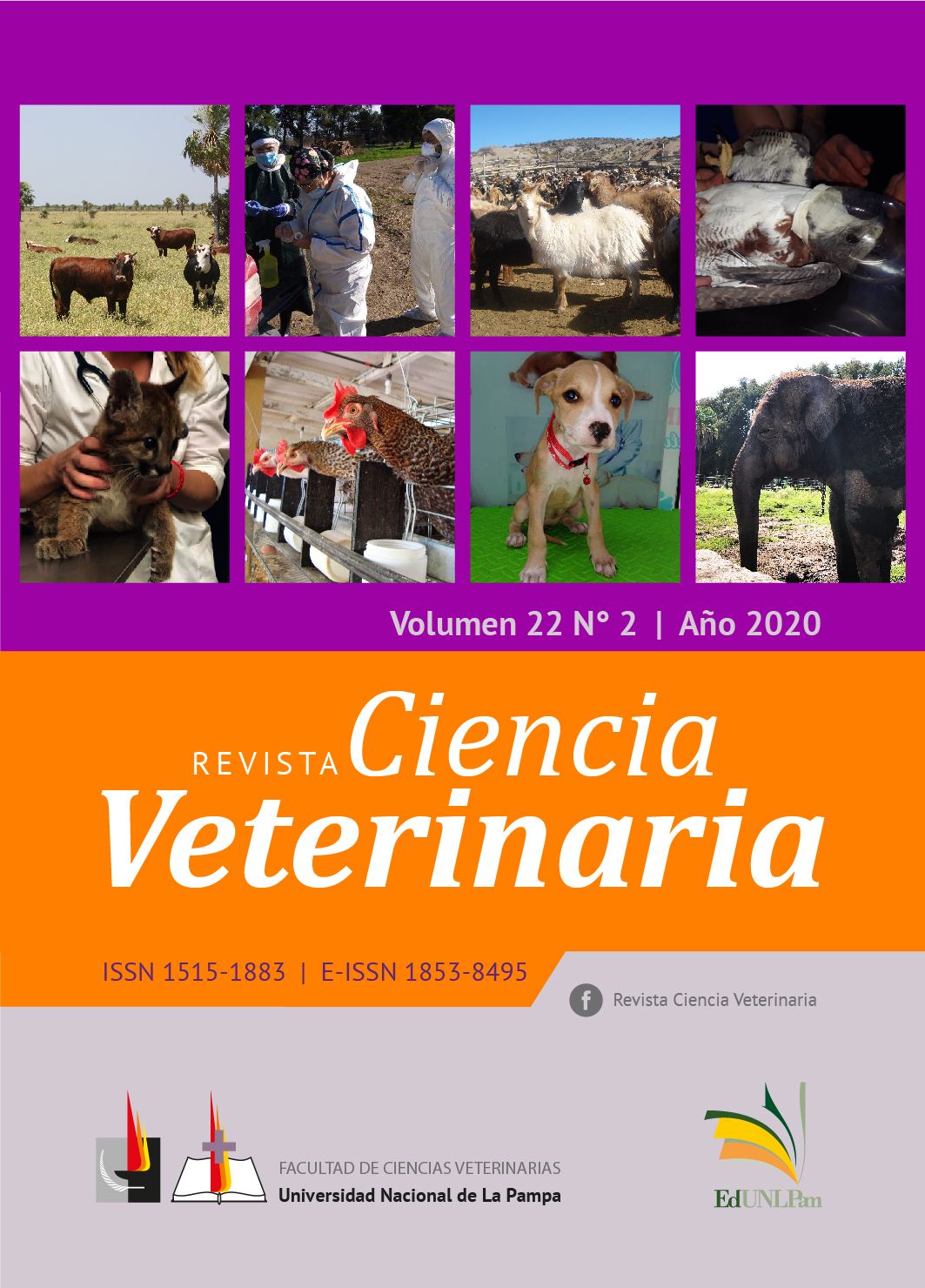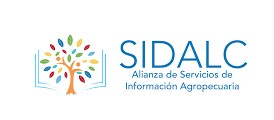Engorde de novillos en confinamiento: Evaluación del desempeño productivo mediante simulación de estrategias de alimentación
DOI:
https://doi.org/10.19137/cienvet-202022204Palabras clave:
Peso Vivo, Evaluación de Escenarios, Función de crecimiento, ConsumoResumen
Se diseñó un modelo de simulación con el objetivo de servir como herramienta de gestión para estimar la tasa de cambio del peso vivo en novillos confinados. Los principales componentes del sistema de producción integrados en el modelo fueron el animal, medio ambiente y la dieta. Las interrelaciones biológicas cuantificadas se resumen en el consumo voluntario de materia seca y balances nutricionales de energía metabolizable y proteína digestible. El consumo potencial estimado por la madurez fisiológica dependiente del biotipo animal cebuino, taurino o hibrido, sexo y edad fue corregido por índices relacionados con el tamaño de la partícula alimenticia y digestibilidad real de la dieta. Ésta fue estimada mediante el desarrollo y validación de índices y funciones de corrección considerando el nivel de taninos, sílice, proteína cruda y carbohidratos no estructurales junto con el tamaño de partícula tomadas de tablas de datos del modelo Cornell. La confianza del modelo para predecir la tasa de incremento del peso vivo fue evaluada mediante la prueba t student con datos experimentales de 12 lotes de novillos de razas de madurez fisiológica precoz, durante 119 días. Las ganancias diarias de pesos promedios del modelo presentaron una tendencia similar a los datos observados (P:0.65). Además, el análisis de regresión entre variables simuladas y observadas presentó similar tendencia tanto para estimación de consumo (R2=0,62) como para la estimación de la ganancia diaria de peso (R2=0,58). El modelo permite evaluar innovaciones de procesos para determinar funciones de producción relacionadas con el peso vivo en diferentes escenarios incorporando variables como biotipo bovino, calidad de dieta modificada en base a su digestibilidad, tamaño de partícula, y temperatura ambiental.
Descargas
Citas
SENACSA 2017 Estadísticas pecuaria. Consultado en línea en http://www.senacsa.
gov.py/v8/pdf/estadistica_pecuaria/2017/anuario-2017-1.pdf
Ocampos Olmedo DA, Lopes J, barcellos OJ, de Oliveira TE. Desenvolvimento de un
modelo preditor do desempenho de novillos de corte suplementados em pastagens
tropicais. Revista Brasilera de Zootecnia.2010; 39(2): 402-410.
Allende R, Aguilar C, García F.. Modelo de simulación para estimar la ganancia de peso en novillos en praderas naturales de la IX región de Chile. Proceedings de la XVI Reunión Latinoamericana de Producción Animal. III Congreso Uruguayo de Producción
Animal.2000.
Vera R, Morales JS. Decision support systems for pasture utilization: Developments,
opportunities and constrains. In Simposio Internacional en producción Animal y Medio Ambiente. Proceedings XXVI Reunión anual de la Sociedad Chilena de Producción Animal.2001.
CSIRO. Nutrient Requirements of Domesticated Ruminants. CSIRO Publishing, Collingwood. 2007. pp 209-213.
NRC. Nutrients requirements of beef cattle. Eight revised edition. National Academy
Press. Washington, D.C 2006.
Giger-Reverdin S, Aufrere J, Sauvant D, Demarquilly C, Vermorel M.Prediction of energy values of compound feeds for ruminants. Anim. Feed Sci. Technol. 1994;48: 73-98.
Vierira RAM, Tedeschi LO, Cannas A. A generalized model for describing fiber dynamics in the ruminant gastrointestinal tract. The heterogeneity of the pool of fiber
particles in the ruminoreticulum. 2007 Beef Cattle Report in Texas. Texas A&M University, College Station, TX.2007. pp. 97-102 .
Van Soest PJ.Nutritional ecology of the ruminant. 2nd Edition, Cornell University
Press, Ithaca.1994. pp. 476.
ARC. The nutrient requirements of ruminant livestock. London, Commonwalth Agricultural Bureaux, Farnham Royal, Slough, Gresham Press.1984.
Australian meat research comite review. The requirements Nitrogen for ruminal microbial. 1996. [Internet] consultado: Mayo 2019. Disponible en: http://www.austehc.
unimelb.edu.au/asaw/biogs/A000409b.htm
Nocek JE, Tamminga S. Sites of digestion of starch in the gastrointestinal tract of dairy cows and its effects on milk yield and composition. J. Dairy Sci.1991; 74: 3-598-3629.
Stokes SR, Hoover WH, Miller TK, Manski. Impact of Carbohydrate and protein levels on bacterial metabolism in continuous culture. J. Dairy Sci. 1991; 74: 860-870.
Mertens DR. Predicting intake and digestibility using mathematical models of ruminal function. J. Anim. Sci.1987; 64:1548-1558.
AFRC. Nutrients energy and protein requirements for ruminants. CAB International,
United Kingdom. 1993.
Garcia F. Requerimientos de proteína en ganado lechero. En: Simulación de Sistemas Pecuarios. Ruiz, M.E. Editor RISPAL.1992. pp 189 - 283.
Orskov E. Nutrición proteica de los rumiantes. Editorial Acribia. Zaragoza. España.
Pp. 177.
Aguilar C, Cortés H, Allende R. Los modelos de simulación. Una herramienta de apoyo a la gestión pecuaria. Archivos Latinoamericanos de Producción Animal.2002; 10 (3) 226-231.
SAS. Statistical Analysis Systems User’s Guide. Version 2002. SAS Institute, Cary, NC.
Publicado
Cómo citar
Número
Sección
Licencia
Al momento de enviar sus contribuciones, los colaboradores deberán declarar , de manera fehaciente, que poseen el permiso del archivo o repositorio donde se obtuvieron los documentos que se anexan al trabajo, cualquiera sea su formato (manuscritos inéditos, imágenes, archivos audiovisuales, etc.), permiso que los autoriza a publicarlos y reproducirlos, liberando a la revista y sus editores de toda responsabilidad o reclamo de terceros , los autores deben adherir a la licencia Creative Commons denominada “Atribución - No Comercial CC BY-NC-SA”, mediante la cual el autor permite copiar, reproducir, distribuir, comunicar públicamente la obra y generar obras derivadas, siempre y cuando se cite y reconozca al autor original. No se permite, sin embargo, utilizar la obra con fines comerciales.








.jpg)

4.png)


7.png)






